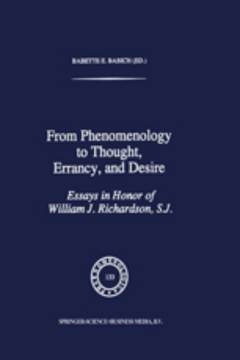Repository | Series | Book | Chapter
Through phenomenology to concealment
pp. 5-15
Abstract
In the Preface he contributed to Richardson's book, Heidegger urged that his pathway should not be described in the phrase "From Phenomenology to Thought" but rather "Through Phenomenology to Thought." And Richardson, when he accepted this proposal as a guideline for his book, helped to shape a whole generation's reading of Heidegger. Virtually everyone has now come to see the appropriateness of the title. It points to the deep and complex movement of the famous Kehre, in at least two ways. First, phenomenology was necessary: the pathway to "thought" had to go through it, and therefore phenomenology can never have been utterly devoid of "thought" in the first place. In the second place, phenomenology was not just one approach that could be cast aside later in favour of a new one called "thought" — instead, it left its mark permanently on "thought." Now I would like to explore the problem of the Kehre,with a focus more on the first point, the way in which "thought" may make its presence felt within phenomenology.
Publication details
Published in:
Babich Babette (1995) From phenomenology to thought, errancy, and desire: Essays in honor of William J. Richardson, S.J.. Dordrecht, Springer.
Pages: 5-15
DOI: 10.1007/978-94-017-1624-6_1
Full citation:
Nicholson Graeme (1995) „Through phenomenology to concealment“, In: B. Babich (ed.), From phenomenology to thought, errancy, and desire, Dordrecht, Springer, 5–15.



